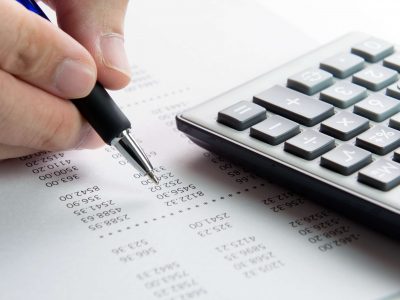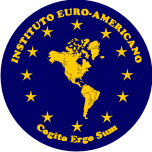
On the other hand, planning makes sure the financial resources are allocated strategically and align with the organization’s business goals. Cost control refers to the process of monitoring and managing expenses within an organization to maintain financial stability and achieve profitability. This process involves identifying and analyzing various cost factors, such as operational expenses, production costs, and overheads, and implementing measures to reduce or optimize them. Delving deeper into standard costing, it’s important to recognize its role in facilitating better human resource management. By distinguishing direct costs from indirect costs, companies can pinpoint training needs for employees or identify areas where automation could reduce labor costs.
The Evolution of Cost Management Tools and Techniques
This decentralized ledger offers an immutable record of transactions, ensuring that financial activities are conducted with utmost integrity. The application of blockchain extends beyond mere transaction recording; it revolutionizes cost control mechanisms by providing real-time tracking and automated compliance checks. Through these technological avenues, the pursuit of cost control becomes a dynamic and continuous process, adapting to the evolving landscape of business operations and market conditions. The integration of such cost control advancements not only curtails unnecessary spending but also propels companies towards greater innovation and competitiveness. The main objective of cost control is to manage and minimize costs while maintaining or improving the quality of products or services. Organizations will proactively identify and manage risks that may impact cost performance, such as supply chain disruptions, market fluctuations, and regulatory changes.

Sustainability-centric approaches
- Relying on essential tools like spreadsheets for cost control might work for tiny projects, but for anything more significant, you’ll need the advanced capabilities of construction cost management software.
- For example, while entirely necessary, your cybersecurity program can require a significant amount of upfront investment.
- Detailed cost analysis empowers organizations to categorize expenses based on their impact on business objectives.
- Here, technology is not just a tool for efficiency but also a means to achieve long-term financial health without compromising environmental and social responsibilities.
- This involves identifying and implementing measures to minimize expenses without compromising product or service quality.
Discover the next generation of strategies and solutions to streamline, simplify, and transform finance operations. Investor stakeholders may be attracted to the stock of publicly-traded companies with effective expense control and corporate governance. Download our white paper, “The Holy Grail of Accounts Payable” to learn how your business can better control its accounts payable-related costs. It may seem obvious, but simply extrapolating the entire cost by using a smaller unit of cost as a benchmark is an effective method.

What are the key performance indicators for cost control?
- It is calculated by dividing the net profit or return on investment by the initial investment cost.
- From small businesses to large corporations, the integration of mobile technology into cost management processes has enabled stakeholders to make informed decisions swiftly, irrespective of their location.
- Long-term accounting approaches in SCM are crucial for creating a cost-conscious culture within the organization.
- The evolution of cost monitoring technologies has not only improved the efficiency and accuracy of financial reporting but also empowered businesses to harness data for strategic decision-making.
- Strategic Cost Management (SCM) encompasses long-term accounting approaches aimed at controlling expenses efficiently.
This involves optimizing resource allocation, embracing cost-effective cloud solutions, and implementing agile methodologies for efficient project delivery within budget constraints. Adopting technology solutions, such as automation and data analytics, contributes to improved production processes, reduced overall production costs, and enhanced cash flow in the manufacturing business. Cost control is a pivotal factor in steering a company toward sustainable growth, heightened profitability, and overall success, especially in the dynamic landscape of business and finance. Navigating the competitive terrain requires astute financial management, and effective cost control stands as a linchpin in maximizing a company’s financial gains. In conclusion, there are numerous cost control techniques that can be implemented to reduce expenses and achieve financial stability. These techniques can also provide competitive advantage and help manage financial risks.
Benefits of keeping down costs
From the perspective Restaurant Cash Flow Management of a CFO, the focus is shifting from traditional cost-cutting measures to a more dynamic approach that emphasizes value creation and strategic growth. This involves a careful balance between investing in innovation and maintaining financial discipline. For operations managers, the trend is towards real-time monitoring and predictive analytics to preemptively identify cost overruns and operational bottlenecks. Meanwhile, IT departments are increasingly adopting cloud services and SaaS models to reduce upfront capital expenditures and transition to more predictable operating expenses. In the realm of cost management, the integration of technology stands as a pivotal turning point. It’s not merely about automating processes or digitizing records; it’s a transformative approach that redefines how organizations perceive and manage costs.

Integration with ERP systems
For effective cost reduction organizations can renegotiate trial balance supplier contracts, optimize operational processes, and improve efficiency. Investing in software asset management (SAM) processes and tools can improve efficiency, reduce risks and make the most of your software investments. By analyzing this usage data, businesses can set benchmarks to optimize their subscription plans.

Identify redundancies and inefficiencies
- These technologies are not just tools for automation; they are becoming integral to strategic decision-making processes.
- FinOps can help an organization proactively identify and reduce unwanted spending, scale cloud resources and automate cost control policies.
- Budgets serve as dynamic roadmaps, delineating financial allocations across various departments.
- Maintaining open lines of communication is vital in construction management, but the practice of gathering daily updates from your team is equally important.
- This integration enhances accuracy, efficiency, and transparency in cost control processes, creating a unified and comprehensive financial management ecosystem.
- Cloud-based solutions have revolutionized the way businesses operate by providing flexible and scalable software and infrastructure services over the internet.
By implementing these best practices, organizations can enhance their cost control efforts, optimize resource allocation, and achieve sustainable financial performance. Earned Value Management (EVM) is a project management technique that integrates cost, schedule, and performance data. It helps in tracking the value of work completed in relation to the planned budget and schedule. EVM helps organizations to monitor project costs effectively, assess performance, and take corrective actions. Standard cost accounting sets predetermined standard costs for materials, labor, and overhead. In this process actual costs are compared with the standard costs, enabling organizations to identify and address cost variances.

No Comment
You can post first response comment.